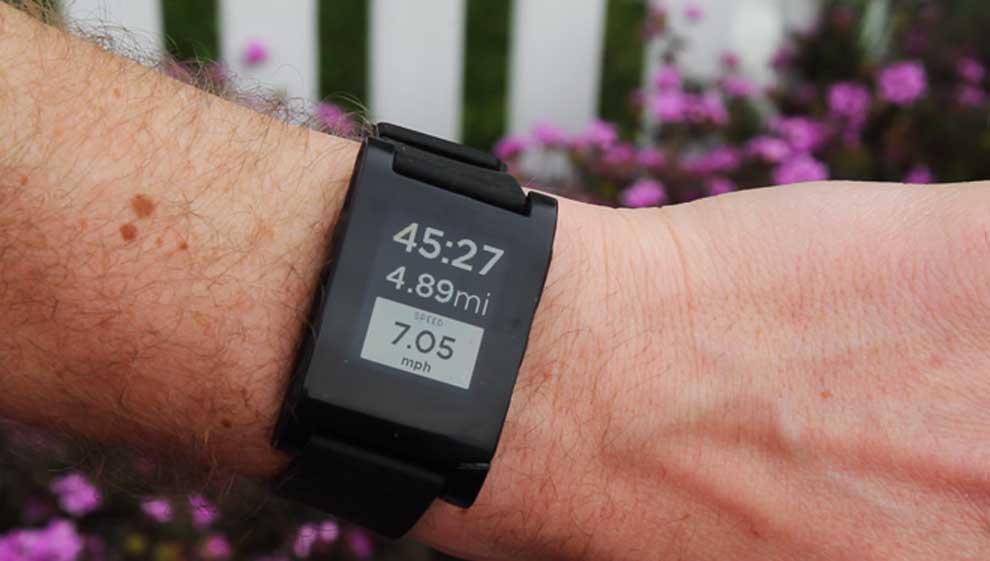We might think that wearable technology is something new but back in the 80s Douglas Adams noted,
“Orbiting this at a distance of roughly ninety-eight million miles is an utterly insignificant little blue-green planet whose ape-descended life forms are so amazingly primitive that they still think digital watches are a pretty neat idea.”
Some 30 years later we mightn’t have evolved much, but our digital watches have. Right from the 80s, with the first calculator watches, people have looked at how to make one of the world’s most popular fashion accessories more feature rich. First, it was a calculator, then watches quickly became more adapted to fitness, with information displays. With the arrival of the smartphone, things have started to change.
This year, quite a few companies have announced their plans for smartwatches. Pebble was first to release a genuinely eye-catching and useful device, while Sony and Samsung have been quick to follow up. Previously held back by power consumption, recent OS updates for Android and iOS means that now wireless connections can be maintained for far less battery power.
Let’s first look at Pebble – the first true smartwatch. It was been delayed for some time, but is largely considered one of the big FundIt success stories, with over €1 million in donations, it caught attention early.
The design is fairly simple, but attractive with an e-ink display and a choice of clock faces. The big features are its notifications which light up and vibrate, email and text previews as well as displays showing who’s calling so that you can more easily avoid unwanted calls. The watch also features a few apps, mostly games, and supports music controls for your phone (though no Spotify support on Android as of yet).
In a market set to get much more competitive as a ‘trend-setter’ space, Pebble has made the first important step in being the first product to market, which truly supports various devices with a minimal interface. Creating a sleek, feature rich device all the while, remaining uncluttered, reliable and functional, in my opinion making it the Nokia 3210 of the watch world.
While Pebble may be functional, Sony has made their own entry with a super sleek and super featured version. It should be noted that there was a previous attempt, but this was largely unnoticed, thanks to Pebble’s clever promotion. The company’s second attempt will be different.
While the device only supports Android, it’s a very sleek and well built affair, with a colour touch interface which doesn’t look too dissimilar to the popular iPod Nano watch which has grown in popularity. Offering much more connectivity with your Android smartphone is a great feature for the device, and certainly allows for more scope when using it. The question is, however – just how much functionality do you want?
Another company, which has gone somewhat under the radar, is another FundIt campaign; Meta Watch. This is a slightly more bulky looking device compared to others but is worth a look.
Finally, Samsung; the world’s biggest smartphone maker has hinted at throwing its hat into the ring. Expected next Wednesday (4th) at a conference in Berlin, the Galaxy Gear is to be announced.
Rumour has it, that the Gear will be compatible only with Samsung devices, with the required smartphone app being available only through the dedicated Samsung App Store. That’s a big problem for large scale adoption (if true), but given that Samsung makes up the lion’s share of smartphones in the world, it’s not debilitating. I’m not sure how many people will be willing to switch phones because of the Gear though.
The only company left to make an announcement is Apple, I still believe that it’s a mistake to have them release a smartwatch. It serves only to cheapen the brand that has been built around them. That said, with the 5C on the way, at a cheaper price, Apple seem less concerned with their exclusive image and more concerned with their profit margins.
As someone who doesn’t really wear a watch, I see the huge benefits of the smartwatch market. Currently, if I want to know the time, read a text or email, see who’s calling, etc. I check my phone. The idea of being able to do (almost) everything from my wrist, has a big appeal, especially considering how awkward it can be getting your phone out of skinny-jeans pockets.











